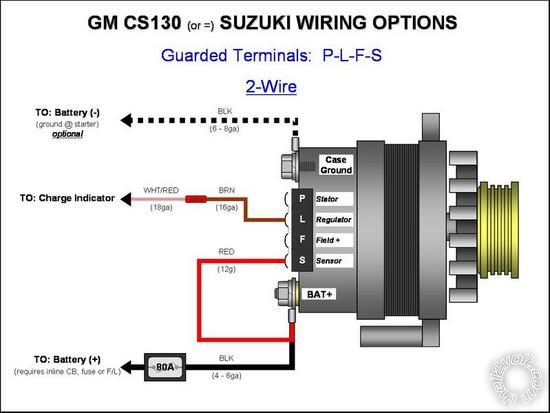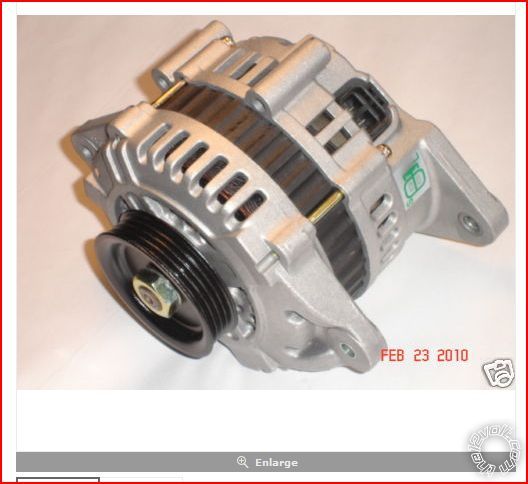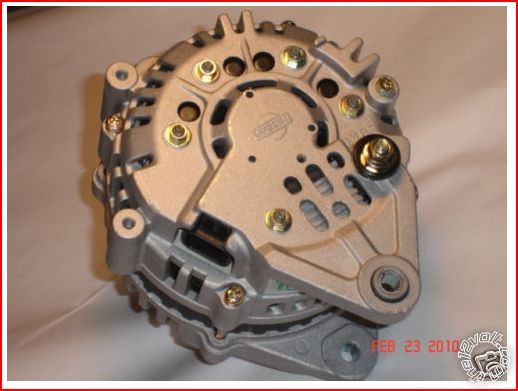The connector is irrelevant, it's the circuit that matters - ie, that it's S&L if that's what you want (not Ig & L, or PLFS as per that Suzuki alternator).
Having said that the connector is irrelevant, one thing I like with that Hitachi connector - as well as other "similar" connectors used by others - is that they use "standard" 6.3mm (1/4") spade terminals.
Hence it is usually easy to connect without the proper plastic-encased terminals, albeit perhaps not as secure. (Most connectors have a locking tab which must be pushed in or lifter to disconnect.)
However I have never bought a new alternator. Mine have always been purchased from auto-wreckers (hence $35-$45 instead of 5 to 10 times that $amount), and I ensure I grab the matching connector.
Actually with alternators, I now try to grab the connector with enough cable to make it to the battery+ for the S terminal, and L terminal to the appropriate point in the vehicle's standard harness if possible.
That saves at least one cable extension (usually soldered and shrink-wrapped), though I have been intending to make a "universal" interface using a 3-ternimal "pi" or |_| spade connector so I can have a standard interface and then make up individual alternator connector to "pi" spade connector adapters for quick substitution of various alternators.
[ The 3rd terminal is a spare - eg, in case I ever use an SIL (Sense, Ign +12V, & L) type. (And with the single _ terminal being for the L (charge-Lamp) in case the other two |
| get swapped, hence not damaging the L circuit.) ]
And yes, with the SL types, it is "merely" the always required & present big +12V "power" wire to the battery usually labelled B or B+ - often with a fuse (near the battery end); the GND via casing to the engine; S direct to the battery +12V (else B/B+ is imitating a single-wire D+ type), and L to the charge lamp of the vehicle.
Note that almost all alternators need the L-circuit connected. Traditionally that was to provide a trickle or tickle current to the rotor (through te charge-Lamp or other lamps) to ensure current generation, though some alternators simply require it to operate the regulator even if the alternator has its own "tickle" method.
In traditional "tickle" charge-Lamp alternators/regulators, the alternator might charge without the charge-Lamp bulb (or L trickle current) thanks to "residual" rotor magnetism, but that may not always occur.
Resistors can be used instead of lamps. Lamps are usually 2W to 3W (~200-250mA), and several bulbs to a total of maybe 1A or 2A might tbe involved, but often trickle currents as low as 10-20mA are sufficient, hence maybe a 560 Ohm resistor (with optional LED).
And don't forget, the electrical connections are probably the easiest part.
Getting the correct direction (clockwise or anti-clockwise) and suitable mounting flanges and spacings - and pulley type & offset - are all variables if the alternator fit is not known.
Don't just buy any alternator because the connectors or
type is right.
Also, it may be that HO isn't readily available as an SL type (they seem to be D+ types else with external regulators. In that case, a choice has to be made, but hopefully you and others see the versatility of the "S" types as their "Sense" can be easily
converted to a D+ type, or extended to sense a remote battery, or the alternator
tricked into producing a
higher output voltage with the inclusion of a series voltage dropping device (eg, a diode). That might be overkill for some systems, but it is nice as a "universally" applicable alternator.
PS - use a text editor for your replies, else deleted the unwanted formatting text. Use "Preview Post" before submitting (Post Reply) to check.
 Printable version
Printable version















 (From spidermarine.com item=101665 Hitachi 12V 110Amp Alternator
But that connector should look like the black one....:
(From spidermarine.com item=101665 Hitachi 12V 110Amp Alternator
But that connector should look like the black one....:
 But you may be best going to some alternator place and specifying what you want - ie, spin direction, mounting type, pulley type, etc, though AFAIK Hitachi SLs are generally only up to ~110A.
I did see a big Hitachi over 200A for emergency vehicles (Ford?), but that looked like a single-wire type.
For HO alternators, the pulleys are usually serpentine belt, but they have various groove options (eg, 4, 5, 6 grooves)
But you may be best going to some alternator place and specifying what you want - ie, spin direction, mounting type, pulley type, etc, though AFAIK Hitachi SLs are generally only up to ~110A.
I did see a big Hitachi over 200A for emergency vehicles (Ford?), but that looked like a single-wire type.
For HO alternators, the pulleys are usually serpentine belt, but they have various groove options (eg, 4, 5, 6 grooves)

